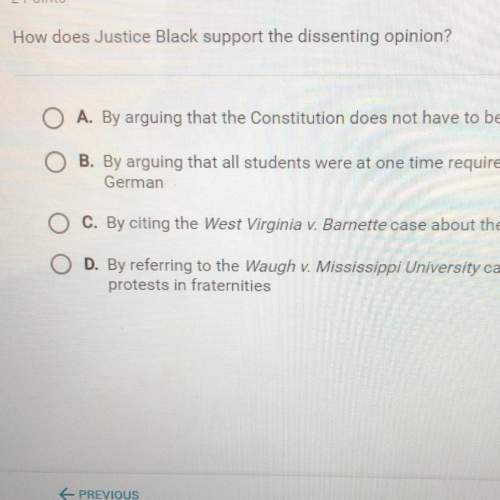
Thoreau's ideas had a profound effect on a man named Gandhi. Gandhi, was a leader in India who worked to end British rule. He led India to
independence and inspired many to non-violent forms of protest and resistance. He fought to end poverty, worked to expand women's right to vote,
and built bridges between ethnic and religious groups. Like Thoreau, he lived simply, owned very little, and ate a vegetarian diet. In India, Gandhi's
form of protest was called the "non-cooperation movement." He urged Indians to boycott British education systems and leave government jobs. The
movement was very popular, and in part to stop its spread, the British controlled government arrested him. After a few years, he was released and
became active in politics again. He inspired many to follow him on marches to protest various taxes. On one such march, thousands followed him 240
miles over 24 days to the sea to protest a salt tax. This march set the example of non-violent resistance to the government that others in the country
followed. Eventually India won independence from Britain, in large part because of Gandhi work.
Gandhi's model of resistance and reform was creative, appealing, and successful. As a result, Dr. Martin Luther King looked to Gandhi when the time came to find a
way to resist segregation in the South. The lunch counter protests, famous for the passive response to anger, and even violence, aimed to end the separation
enforced by laws in some regions of the South King also organized walks, marches, and bus rides that were meant to bring attention to the issues facing African
Americans. These forms of protest were directly modeled on Gandhi's, but King took them straight to the source of oppression Where Gandhi's protests created
awareness and built momentum, King's protests were in the face of great hatred and fear. The passive, non-violent protests were ultimately effective, mainly
because the passive response to violence cast the opposition as brutes. However, change came slowly and at the cost of many lives. King remained committed to
peaceful protest, however, until his death, King learned from Gandhi, expanding on what worked, applying old techniques to a new problem. Gandhi owed his
philosophy, in part, to a New England poet who loved the woods.
Based on the bolded paragraph, which line shows the success of Gandhi work?
O Eventually India won independence from Britain, in large part because of Gandhi work
After a few years, he was released and became active in politics again
O... thousands followed him 240 miles over 24 days to the sea to protest a salt tax
Like Thoreau, he lived simply, owned very little, and ate a vegetarian diet

Answers: 1
Another question on English

English, 22.06.2019 03:30
In just over one hundred years, between 1701 and 1810, 252,500 enslaved africans were brought to barbados—an island that occupies only 166 square miles (making it, today, one of the smallest countries in the world). the english then set out to conquer more sugar islands, starting with jamaica, which they took from spain in 1655. in the same period that the 252,500 africans were brought to barbados, 662,400 africans were taken to jamaica. thus, sugar drove more than 900,000 people into slavery, across the atlantic, to barbados and jamaica—and these were just two of the sugar islands. the english were eagerly filling antigua, nevis, saint kitts, and montserrat with slaves and sugar mills. they took over much of dutch guiana for the same reason. seeing the fortunes being made in sugar, the french started their own scramble to turn the half of the island of hispaniola that they controlled (which is now haiti), as well as martinique, guadeloupe, and french guiana (along the south american coast near dutch guiana), into their own sugar colonies, which were filled with hundreds of thousands more african slaves. by 1753, british ships were taking average of 34,250 slaves from africa every year, and by 1768, that number had reached 53,100. –sugar changed the world, marc aronson and marina budhos how do the authors use historical evidence to support their claim? x(a) they use secondary sources to show how french and english monarchs were indifferent to enslaved people. x(b)they use secondary sources to show that enslaved people often fought for their freedom after arriving in the caribbean. the answer is: (c)they use facts from primary sources to show how countries increased the number of enslaved people to produce more sugar. x(d)they use primary source interviews to show that countries could make more money in trading sugar without using enslaved people.
Answers: 1

English, 22.06.2019 06:00
The author’s purpose for including this in the introduction is
Answers: 1

English, 22.06.2019 09:00
Explain the historical and literary significance of mao zedong’s speech “serve the people.”
Answers: 1

You know the right answer?
Thoreau's ideas had a profound effect on a man named Gandhi. Gandhi, was a leader in India who worke...
Questions

Mathematics, 10.09.2020 14:01

English, 10.09.2020 14:01

Social Studies, 10.09.2020 14:01

Mathematics, 10.09.2020 14:01

Mathematics, 10.09.2020 14:01

Mathematics, 10.09.2020 14:01

Mathematics, 10.09.2020 14:01

Mathematics, 10.09.2020 14:01

Mathematics, 10.09.2020 14:01

Mathematics, 10.09.2020 14:01

Mathematics, 10.09.2020 14:01

Mathematics, 10.09.2020 14:01

Mathematics, 10.09.2020 14:01

History, 10.09.2020 14:01

Mathematics, 10.09.2020 14:01

Mathematics, 10.09.2020 14:01

Mathematics, 10.09.2020 14:01

Mathematics, 10.09.2020 14:01

Mathematics, 10.09.2020 14:01

Mathematics, 10.09.2020 14:01




